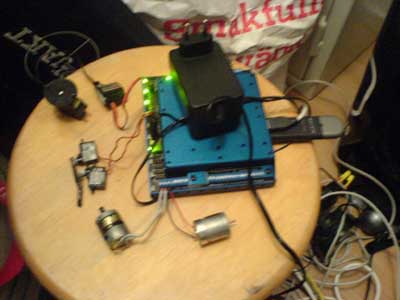
Depending on their tasks and area of deployment, AGVs as forklifts can move pallets, as tractor units can tow trailers, or as moving cargo areas can transport boxes or packages. The battery is charged via a induction charging plate or at charging stations, where the batteries can also be replaced. Power is supplied either through a cable (for rail-mounted AGVs), the rail itself, or a battery. AGVs differ in terms of their power supply, the tasks they carry out and the navigation and routing process. 1-2 meters per second and is able to transport payloads of up to roughly 2,000 kilograms. This type of robot generally moves at approx. Warehouses are another popular operating place for AGVs, where individual goods or large ranges of goods are taken to defined packing stations where they are processed. In the industrial environment, they represent the development from the traditional, bulky conveyor belt to a space-saving, highly flexible solution. AGVs are typically used to transport materials in production facilities. is expected in the coming years.Īn AGV is a driverless transport vehicle with its own drive that is controlled automatically and guided without touch. This trend will continue in the future: Average growth of 12 percent p.a. Worldwide in 2016 roughly 290,000 industrial robots were in use, 14 percent more than in 2015. In Europe the average robot density is 99, in the US it is 84, and in Asia it is 63.Īccording to statistics from the IFR (International Federation of Robotics, the international umbrella organization of all national robotics associations) in 2016, with about 31,500 installed units, the US recorded an all-time high for industrial robots, a 15 percent increase over 2015. Global robot density has increased significantly over the last years: In 2015, on average there were 66 units per 10,000 employees, but this has now risen to 74 units. They can also carry out actions autonomously depending on how they are programmed. Most of these robots consist of a robot arm, a gripper, various sensors, and a control unit. Industrial robots are programmable machines that are used to handle, assemble, or process workpieces in the industrial environment. Experts from the Boston Consulting Group assume that in the future the use of robots will increase productivity per employee by up to 30 percent.


Staff carry out new tasks in newly created areas of activity, such as programming the machines and quality control at the end of the automatic production process. Paradigm Electronics in Canada is a example: Productivity was increased by 50 percent by using cobots, and not one single job was lost. Compared to traditional industrial robots, collaborative robots are smaller, can be used more flexibly, and are easier to program.Ĭobots don’t replace human workplaces, they supplement them. Cobots work together with humans in production processes and are no longer kept separate from their human co-workers with protective devices, like typical industrial robots. In a growing number of areas in industry, conventional industrial robots are being replaced by or backed up with collaborative robots.

Collaborative robots or cobots are becoming increasingly important.


 0 kommentar(er)
0 kommentar(er)
